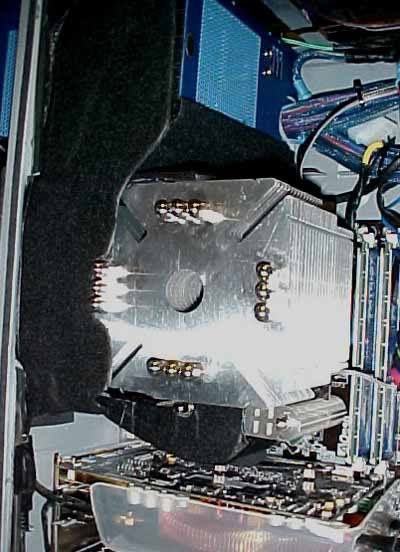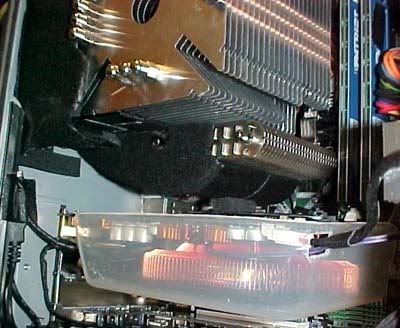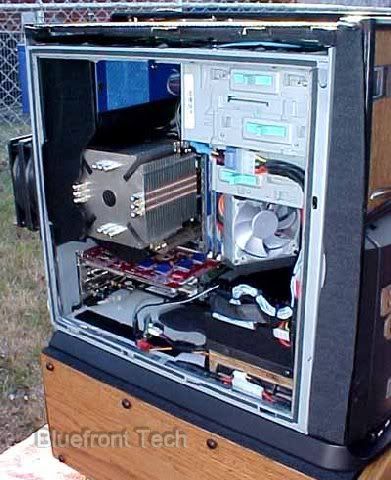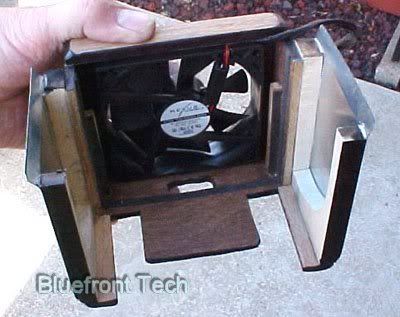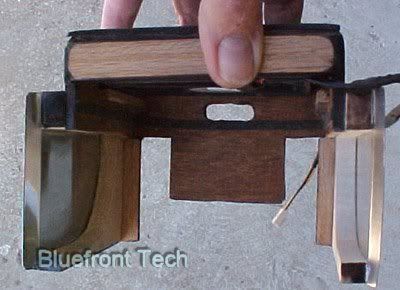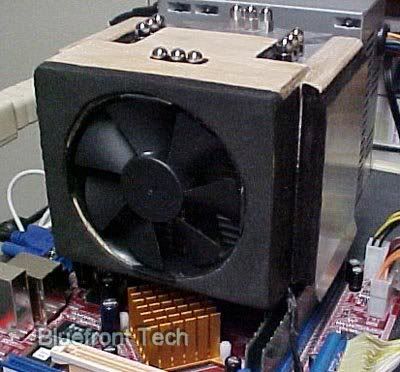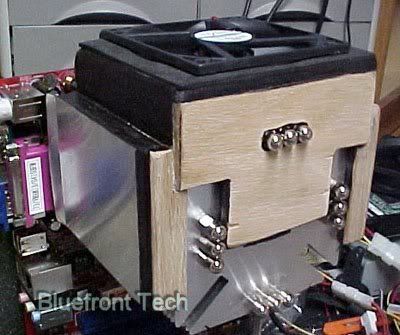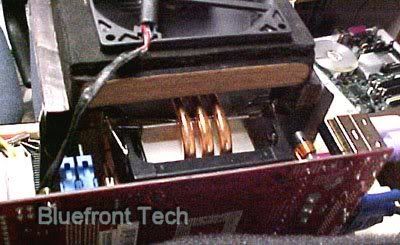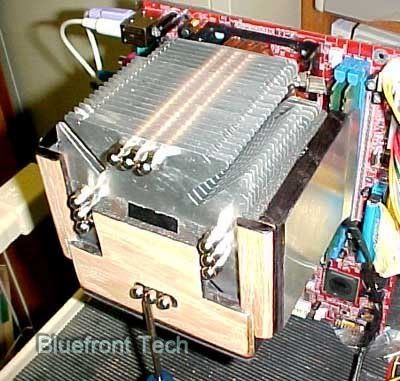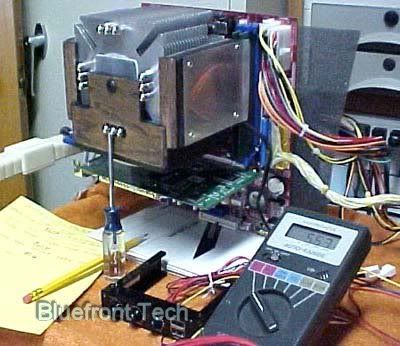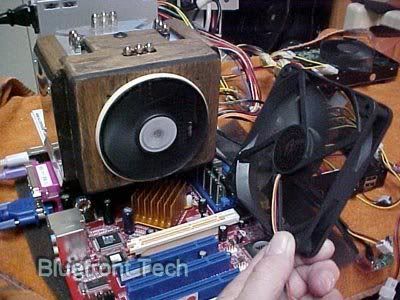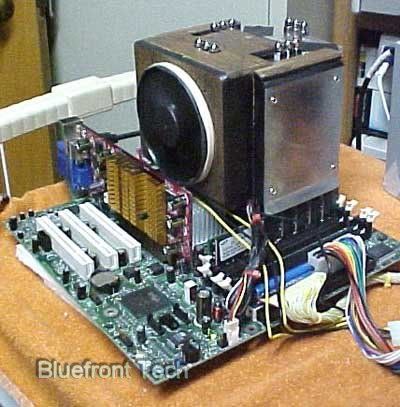Now you all know a 120mm fan should cool better than a 92mm fan....right? The problem with a Ninja is with the OEM 120mm fan mounting, much of the airflow is wasted. The only way to make use of this wasted airflow is by the use of a duct. Here's one way of doing this....there are other ways.
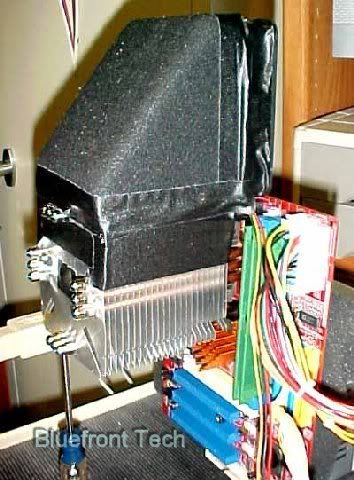
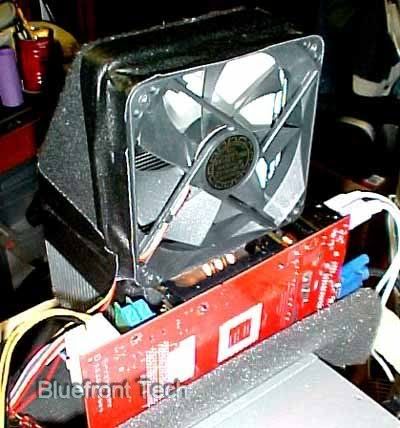
The idea is to gradually increase the Ninja dimensions to match a 120mm fan dimensions. If you do the dimension change too abruptly (like with a 92/120 adapter), you will lose much of the benefit. Here's the numbers at the same ambient as the last test.
120mm low-speed Yate Loon......45 CFM
@12V.....1dle.....50%.....75%.....100%
.............28C.....32.........35........37
@5V.......28C.....34.........36........38
This works out to a CPU temp improvement of 3C @100% over this same fan mounted directly on the Ninja, at 12v or 5v. I consider this significant, considering how much trouble I had gaining even a one degree improvement with the other duct. And the numbers are a little better than the 92mm Yate Loon with much tweaking to the other duct. Perhaps with some tweaking, this duct could do better. The 92mm YL and this low-speed 120 YL are very close in CFM.....42/45.
Conclusions....if you want to gain any benefits of the 120mm fan, over a 92mm fan on a Ninja, you'll have to devise a duct of some sort, to capture the entire airflow of a 120mm fan.
Scythe......are you listening?

